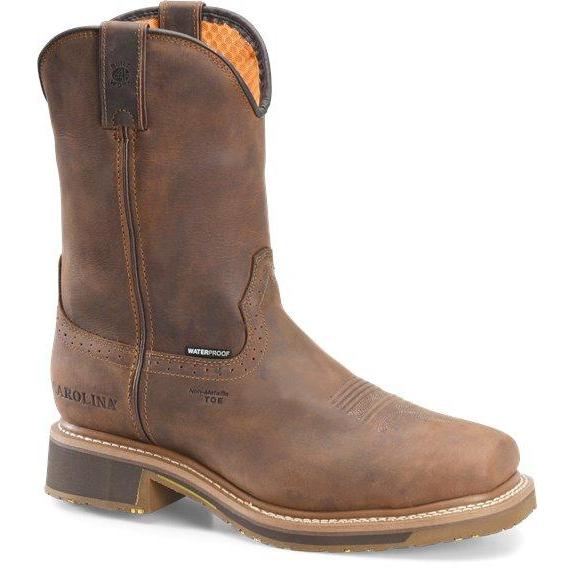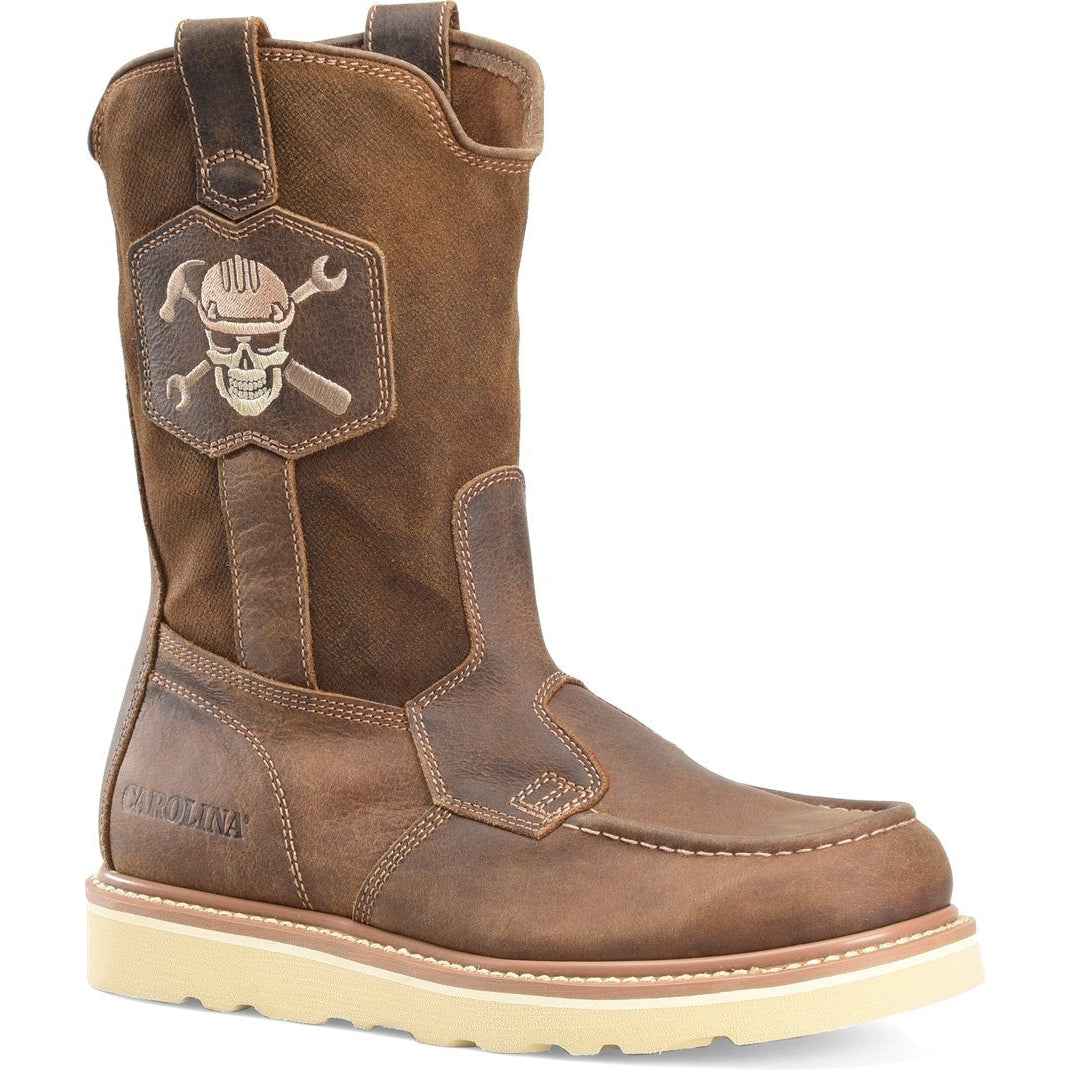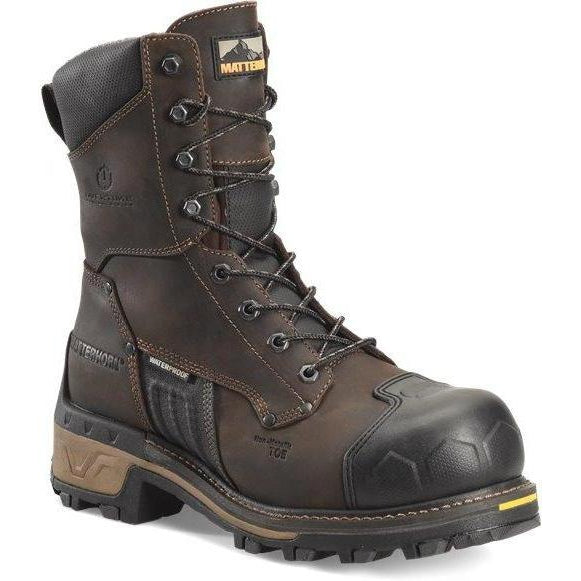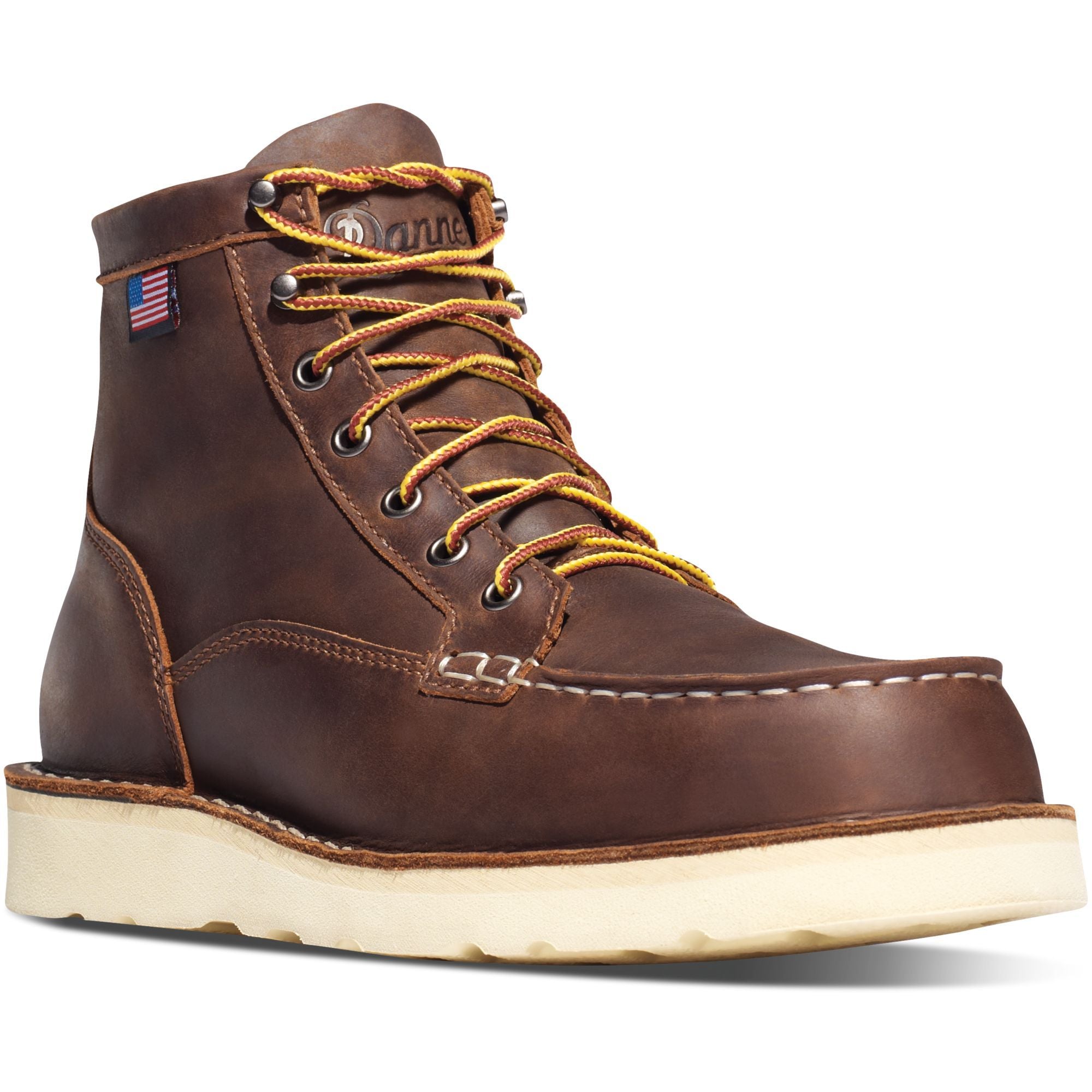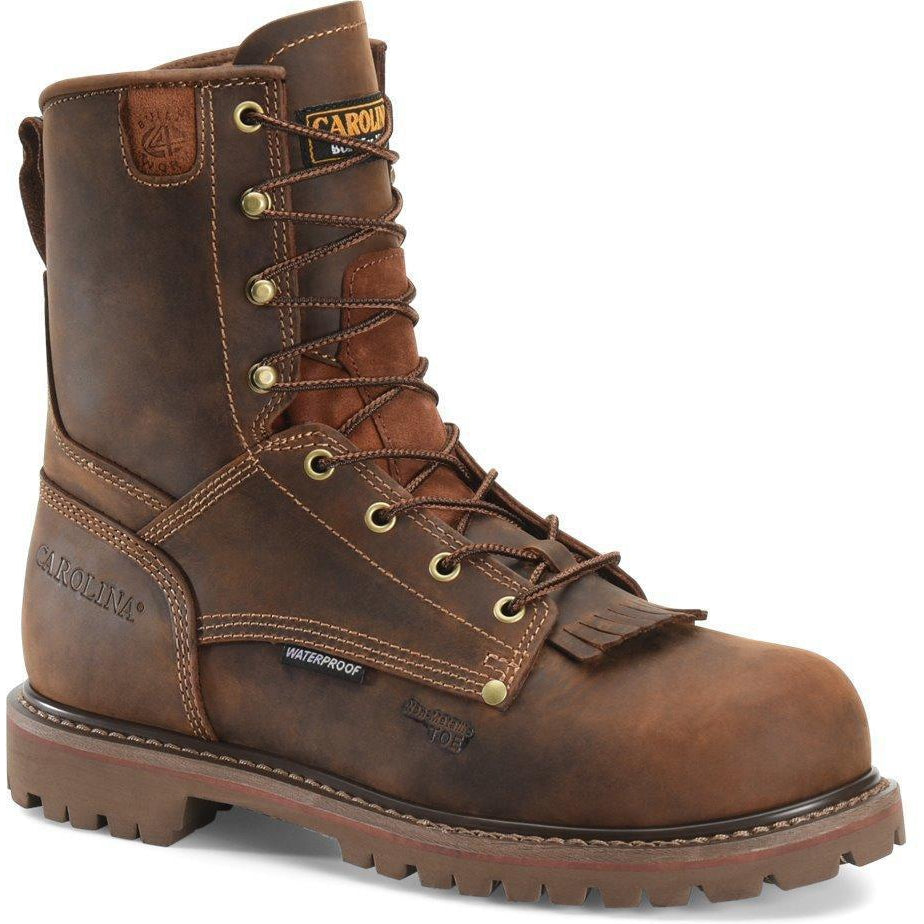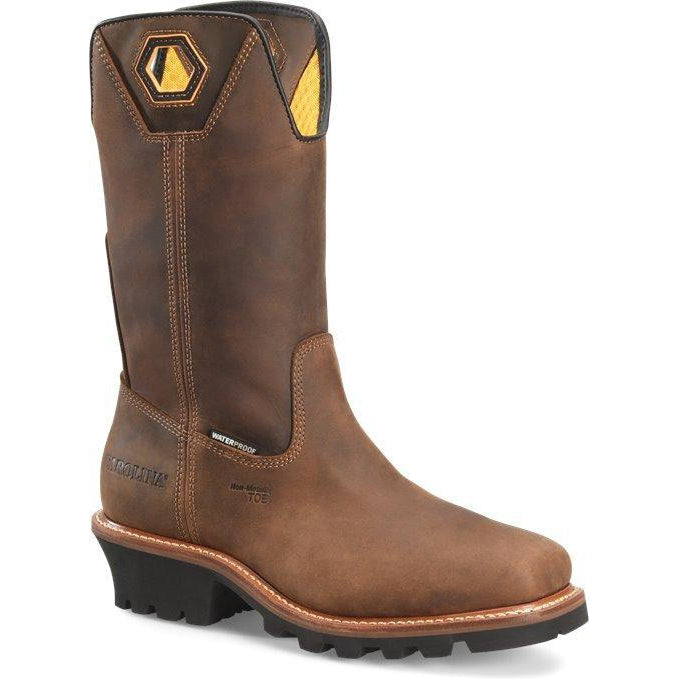Are you tired of squeezing your feet into ill-fitting boots? If you're nodding in agreement, you're in the right place. Welcome to your ultimate boot size guide, where we'll unravel the mysteries of boot sizes, boot width charts, and everything in between.
Whether you're a rugged outdoor enthusiast or a hardworking individual in need of reliable work boots you can lean on, this blog is your trusty companion on the quest for the perfect-fitting pair.
Time to bid farewell to those foot-pinching pains of uncomfortable footwear for good!
Size Matters: The Consequences of Neglecting Size Guides & Boot Width Charts
Ready to dive into the nitty-gritty of why measuring your feet properly and sticking to size guides and boot width charts is an absolute game-changer?
Good, because we're about to unveil the benefits of doing so that will save you and your feet from a world of pain. After all, even the world's most amazing boots won't save the day if you miss the mark on the fit.
- Avoid Painful Blisters & Calluses: Ill-fitting boots, usually the ones that are too small for your feet, can rub against your skin like an abrasive friend you'd rather avoid. This friction can lead to painful blisters and calluses that make every step a wince-worthy experience.
- Prevent Ingrown Toenails, Corns & Bunions: When your boots are too tight, your toes can end up in a vice grip. Boots that are too narrow can put excessive pressure on your toes, causing ingrown toenails, corns, and bunions to develop over time. And trust us, these are about as enjoyable as a root canal.
- Keep Numbness and Nerve Compression at Bay: Squeezing your feet into boots that are too small can compress nerves and blood vessels, leading to numbness, tingling, and potentially more serious issues over time.
-
Reduce the Risk of Chronic Foot Conditions: Your feet do a lot for you, so don't punish them with tight boots. Conditions like plantar fasciitis and hammertoes can rear their ugly heads if you're not careful.
- Prevent Ankle Sprains and Foot Fatigue: Boots that don't provide proper support can increase your risk of ankle sprains and leave your feet feeling like they've run a marathon when all you did was walk to the corner store.

Measure for Success: Boot Width Chart
[prc-collections-carousel]
Let's kick things off with the backbone of your boot-sizing journey – the boot width chart. Boots come in various widths to accommodate the diversity of foot shapes out there. What are the sizes of feet width?
You might be familiar with the standard widths:
- B (extra narrow),
- C (narrow),
- D (regular),
- E (wide),
- EE (extra wide),
- and EEE (triple wide).
The three most popular boot widths are B, D, and E. However, understanding what these letters mean in practical terms is a whole new ballgame, yet crucial for finding that perfect fit. Scroll down for a complete boot width chart (measurement in inches) for men's and women's boots.
Men's Boots Size Chart: Male Boot Width Chart
Men, we've got your boot sizing needs covered. Below is a comprehensive male boot width chart to help you determine the correct width for your next amazing pair of boots.
| Boot Width | Inches (Men's) |
|---|---|
| B (extra narrow) | 3.6 - 3.8 inches |
| C (narrow) | 3.8 - 4.0 inches |
| D (regular) | 4.0 - 4.2 inches |
| E (wide) | 4.2 - 4.4 inches |
| EE (extra wide) | 4.4 - 4.6 inches |
| EEE (triple wide) | 4.6 - 4.8 inches |
Women's Boot Size Chart: Female Boot Width Chart
Ladies, we haven't forgotten about you, either. Whether you're outside conquering rugged trails or need a pair of reliable work boots for your industry to get the job done right, finding the perfect size is just as essential.
So, without further ado, here's your female boot width chart:
| Boot Width | Inches (Women's) |
|---|---|
| B (extra narrow) | 2.8 - 3.0 inches |
| C (narrow) | 3.0 - 3.2 inches |
| D (regular) | 3.2 - 3.4 inches |
| E (wide) | 3.4 - 3.6 inches |
| EE (extra wide) | 3.6 - 3.8 inches |
| EEE (triple wide) | 3.8 - 4.0 inches |
Now that you've got your boot width chart handy, it's time to dive deeper into finding the right fit by understanding your unique foot measurements to make the most out of your boot preferences.
Finding the Right Fit: Understanding Your Foot Measurements
Measuring your feet is a crucial first step in ensuring your boots fit like a glove. But it's not just about length; width plays an equally important role. Here's why:
-
Length: The length of your foot determines your boot size. However, don't assume your boot size is the same as your normal shoe size; it can vary between different boot brands and boot types.
- Width: Width is often overlooked but is equally important for comfort. If your feet are wider than standard, opting for wide sizes is a wise choice. A boot that's too narrow can lead to discomfort, especially if you plan on wearing thicker socks.
Wondering, "How do I know if I need a wide boot?"? By measuring your foot width using the guidelines below and comparing it to the boot width chart!

Measuring Calf Circumference
When it comes to certain boot styles like cowboy boots or pull-on boots, calf circumference matters, too. A lot. The shaft of a boot, that part that wraps around your calf, plays a crucial role in ensuring a comfortable fit. To ensure your boots fit comfortably around your calf, you need to get your calf measures right.
But don't worry; taking shaft circumference measurements won't take more than a couple of minutes of your time. To take accurate shaft measurements, start by wearing the type of socks you intend to wear with your boots. Then, take a flexible tape measure and wrap it around the widest part of your calf.
Make sure the tape measure is snug but not overly tight, as you want to replicate the fit of the boots. This will help you choose boots that not only fit your feet but also provide calf-hugging comfort.
Different Types of Foot Shapes
Feet come in all shapes, sizes, and a variety of widths, and understanding your own foot shape is essential for finding the correct boot size. Whether you have high arches, flat feet, a larger foot, or need boots for narrow feet, there’s a suitable option that matches your unique structure.
[prc-collections-carousel]
How to Measure the Length & Width of Your Feet Step-By-Step
Alright, now that you've got the lowdown on why sizing is the name of the game, let's get down to business. After all, no boot width chart or size guide can rescue you if your foot measurements are off the mark.
How do you measure boot size and width? Here's a simple step-by-step guide to measuring your feet accurately and ending up with the correct measurements:
-
Gather Your Supplies: You'll need a piece of paper, a pen, a ruler, or a flexible tape measure.
-
Prepare the Paper: Place the sheet of paper on a hard, flat surface, ensuring it's larger than your foot.
-
Trace Your Foot: Carefully trace the outline of your foot while standing on the paper. Ensure you're wearing the type of socks you plan to wear with your boots for accurate measurements.
-
Measure Length: Use the ruler to measure from the tip of your longest toe to the heel. This measurement is your foot length.
-
Measure Width: Measure the widest part of your foot. This measurement is your foot width.
- Consult the Boot Size Chart: Use your measurements and compare them the to manufacturer's size guide of the boot brand you're eyeing. Remember, it's not just about length; consider width as well, and use both the boot width chart and size chart to determine your ideal boot size.
Pro Tips & Tricks for Perfect Boot Fitting Measurements
- While it may seem like a minor detail, opt for measuring from the inner edge of your sketch because it will be slightly larger due to the pencil thickness. This tiny adjustment ensures the utmost precision.
- Feet tend to swell and expand as the day goes on, so it's wise to measure them in the morning when they're at their natural size.
- Left and right feet often have their own ideas about size, so measure both and roll with the measurement of the bigger foot.
- Don't forget to account for your socks; wear the ones you plan to sport with your boots for an accurate fit.
- Standing up during measurements is the way to go. None of that sitting-down stuff; it doesn't tell the whole story.
- Take multiple measurements to ensure consistency and precision. Your feet are unique, after all.
Different Types of Boots & Their Sizing Guides
Now that you're armed with your precise foot measurements and newfound knowledge of the importance of boot width charts in finding your perfect pair, it's time to explore the world of boots.
Different types and styles of boots may have specific sizing considerations, so let's dive into a few to prepare you for an optimal boot experience:
Cowboy Boots
Cowboy boots are iconic and stylish, but they come with their own set of sizing rules. Generally, cowboy boots should fit snugly around the ball of your foot and instep while allowing some heel slip for comfort. For those who need durable footwear for tough tasks, cowboy work boots for men are an excellent choice, combining the classic western style with functionality.

Pull-On Boots
Knee boots, such as pull-on boots and cowboy boots, require a precise fit since you can't lace them up for comfort. Be prepared to try different sizes to find the correct boot for your foot shape. Remember that pull-on boots may be slightly larger than your regular shoe size.
Standard Boots
For standard lace-up or zip-up boots, following the boot width chart and your foot measurements should lead you to the correct size. Don't forget to consider the type of socks you plan to wear for optimal comfort – you don't want to have to give up on your favorite boot socks or a new pair of boots, right?
Boot Brands and Styles
Every boot manufacturer may have slightly different sizing guidelines, so it's a good idea to consult their product descriptions and customer reviews for insights into fit and comfort.
Different brands of boots may have their own unique fit characteristics, so don't be discouraged if you need a different size in one brand compared to another when it comes to your normal boot size.

Boot Width Chart + Foot Length = The Perfect Boot Size
Congratulations! You've just completed your boot size guide journey and are now equipped with the knowledge to make an informed decision. Remember that finding the perfect pair of boots isn't just about the dream boot itself; it's about ensuring the correct size and fit. Your comfort and style are worth the effort.
So, the next time you're on the market for boots, use your foot measurements, the boot width chart, and the brands' size guides as your compass. Explore the wide variety of premium boot styles and brands at Overlook Boots to find your perfect pair, and don't be afraid to experiment with different sizes to find your ideal-sized boot that fits just right.
Happy boot shopping!
